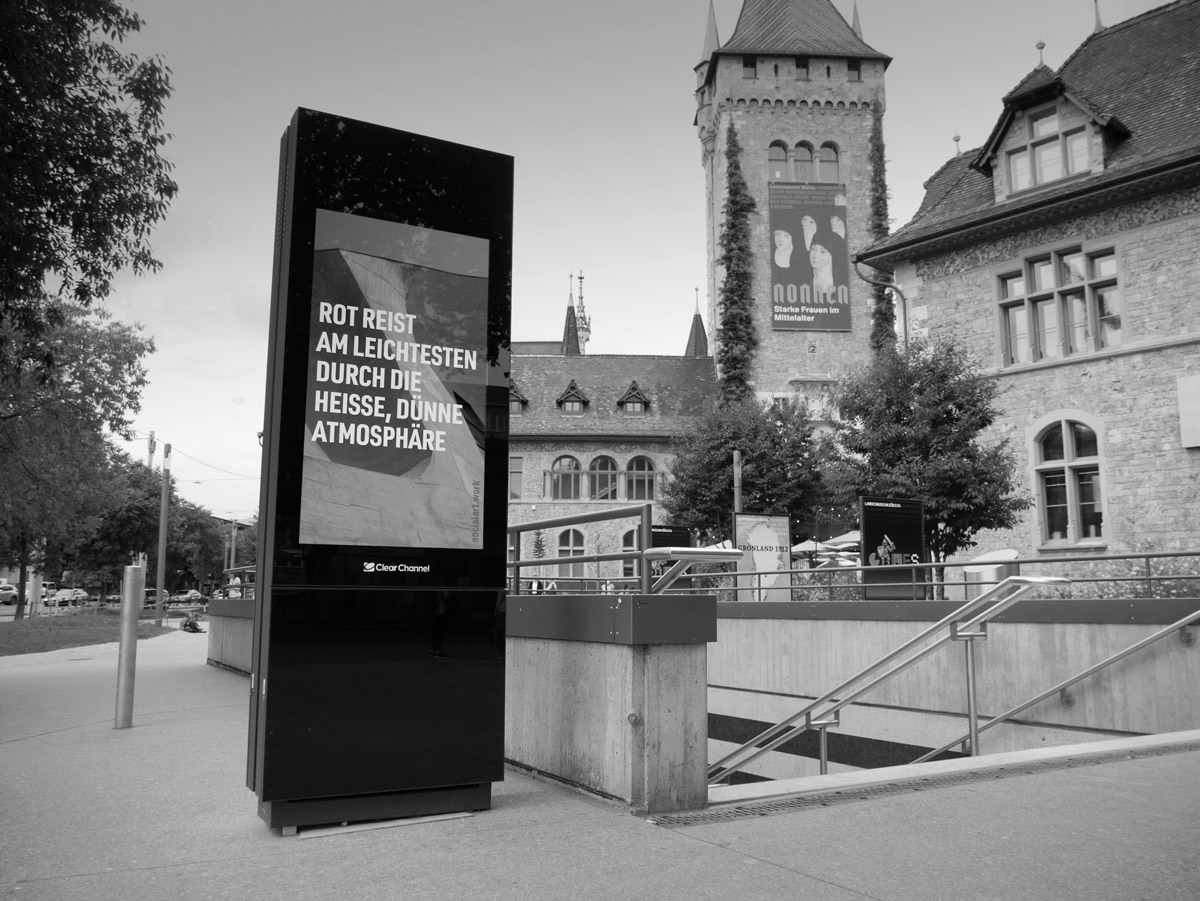We use the cookies _ga, _gat, _gid to collect anonymous data about how you use this site. OK.
If you want to reach the infinite, Explore every aspect of the finite.
GOETHE
The Goetheanum is named in honour of Goethe and Goethean science. It stands in the foothills of the Jura mountains in Dornach just outside Basel, Switzerland. It is the imposing headquarters of Rudolf Steiner’s curious anthroposophical movement founded in 1912.
NOTE
Rudolf Joseph Lorenz Steiner (1861-1925), esotericist, cultural theorist, lecturer, architect, founded the Anthroposophical Society on 28 December 1912 in Cologne, Germany. The Society was re-founded as the General Anthroposophical Society in 1923/4 in Dornach, Switzerland. The First Goetheanum, a timber and concrete structure, was one of seventeen buildings Steiner designed between 1908 and 1925. It was destroyed by fire on New Year's Eve 1922. Steiner designed the Second Goetheanum as a wholly cast-concrete structure. The building was completed in 1928 three years after the architect's death. Its pioneering use of concrete on such a large scale is now widely acknowledge and the Goetheanum has been granted protected status as a Swiss national monument and an outstanding example of 20th-century expressionist architecture.
The Goetheanum from the South, Donarch near Basel, Switzerland.
The Goetheanum was the first large-scale poured concrete building in Europe, exploiting the new material to create powerfully organic forms. It is as much sculpture as it is architecture. Its uncompromising masses and concavities evoke Goethe’s poetic science and his monumental sensitivity to the natural world. The impression made on Firrell by his visit to the Goetheanum in 2019 prompted the creation of
The Chromatika/Die Chromatika,
a new psychological theory of colour for the 21st Century.
Die Chromatika
was created by the artist for the Swiss cities of Basel and Zurich in response to Goethe's
Zur Farbenlehre/Theory of Colours
and Rudolf Steiner's writings on colour (which were themselves informed by Goethean thought).
The series consists of 7 digital posters and a later publication of the same title, exploring the artist's relationship with each of the spectral colours in greater detail.
The Goetheanistische naturwissenschaft / Goethean science pursued by the German poet and playwright Johann Wolfgang von Goethe (1749-1832) was a poetic hybrid of analytical thought and active imagination. In
Zur Farbenlehre,
first published in
1810, Goethe lists more than 800 effects of light, colour, weather and shadow.
Zur Farbenlehre
is not a theory in the modern scientific sense but a meticulous observation and appreciation of colour. Goethe believed in the value of the human being as a living, thinking, feeling instrument for precise scientific observation. In Geothe’s science every aspect of the human organism is used to understand the world - emotion, intuition, logic and love.
Die Chromatika
provides an absolute psychological definition of each of the spectral colours. This is a caprice of course, a chromatic joke, made all the more compelling by the use of German and its presumed precision as the language of science.
Each of the spectral colours is defined psychologically by its own digital poster. Each poster is presented in black and white and features an element of the Goetheanum’s sculptural form.
These ironies are compounded by the fact that the new colour theory has ultimately been inspired by a concrete building, which is, itself, devoid of colour.
Except, as the artist puts it, ‘when the sun sets and the last of the light approaches through the gathering darkness, turning the Goetheanum’s grey cast concrete the colour of an ear or a shell, a toe, the tip of a tongue, sweet Turkish delight, Arabian roses, seashells, pomegranates...’
About the colour red specifically, the artist writes:
There were fireworks burning near the sea. Plumes of coloured fire rose in celebration of a saint's day. I was high up above the coast, looking down on the whole landscape. It was a very hot Mediterranean evening and all the lights of the coastline were shimmering in the heat haze. The red rocks of Sicily glowed in a cobalt sea. When the fireworks came, the blue and green seemed far away but the red travelled very quickly towards me like a great red chrysanthemum of expanding fire. I felt that the red light was somehow travelling through the heated up atmosphere more easily than any of the other colours.
Einmal sah ich ein Feuerwerk zur Feier des Tages eines Heiligen von der sizilianischen Küste aufsteigen. Ich war hoch über der Küste in einer Bergstadt und schaute auf die ganze Szenerie hinab. Es war ein sehr heisser, mediterraner Abend und alle Lichter der Küste schimmerten im Dunst der Hitze. Als das Feuerwerk begann, schienen Blau und Grün weit weg zu sein, aber Rot kam sehr schnell auf mich zu wie eine grosse, rote Chrysantheme eines sich ausbreitenden Feuers. Ich fühlte, dass das rote Licht sich irgendwie viel leichter durch die erhitzte Atmosphäre bewegte als jede der anderen Farben.



